Here are the Best Container Vegetables for your home and garden that you can grow without any fuss to have a fresh and organic supply of greens!
There’s nothing like enjoying the fresh supply of vegetables at your home. Have a look at the Best Container Vegetables you can grow easily!
Here’s everything you need to know about growing vegetables in pots
Best Container Vegetables
1. Spinach

Botanical Name: Spinacia oleracea
Container Size: 6-8 inches
You don’t require very deep pots for growing spinach but use a wide container or window boxes or crates. Use good quality potting mix rich in organic matter. We have a great article on growing spinach in containers here.
Check out how to grow spinach indoors year-round here
2. Onions

Botanical Name: Allium cepa
Container Size: 8-10 inches
This root vegetable is sensitive to season and grows best in 3-5 hours of sunlight. Check out our article for growing onions here.
3. Lettuce

Botanical Name: Lactuca sativa
Container Size: 6-8 inches
All lettuce varieties grow well in containers due to their shallow roots. You can grow this cool-season crop from spring to fall in most regions. Read more growing information in this post.
Learn 7 ways to grow lettuce indoors year-round here
4. Kale
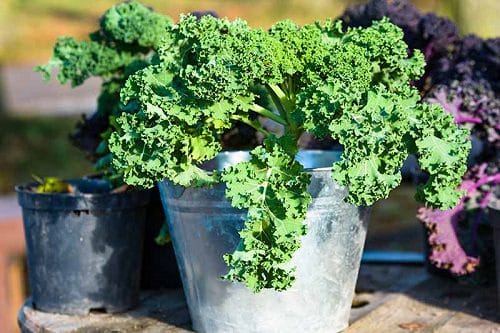
Botanical Name: Brassica oleracea var. sabellica
Container Size: 8-12 inches
Kale is super easy to grow in pots. You can start seeds indoors 5-7 weeks before the last expected frost. If planting in a cool climate, place the containers in an area that gets ample sunlight.
Here’s all you need to know about growing kale in containers
5. Broccoli
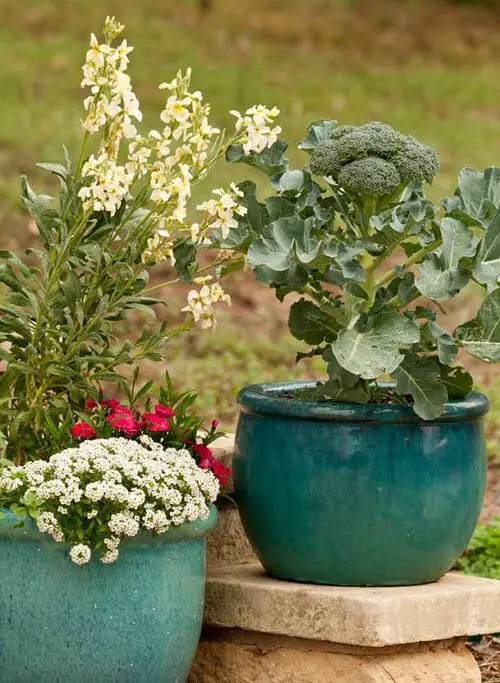
Botanical Name: Brassica oleracea var. italica
Container Size: 8-10 inches
Sow the seeds half-inch deep filled with the seed-starting mix in individual pots. Keep the containers in an area that gets 3-5 hours of sunlight. Check our article for growing broccoli in pots here.
Check out different types of broccoli here
6. Arugula
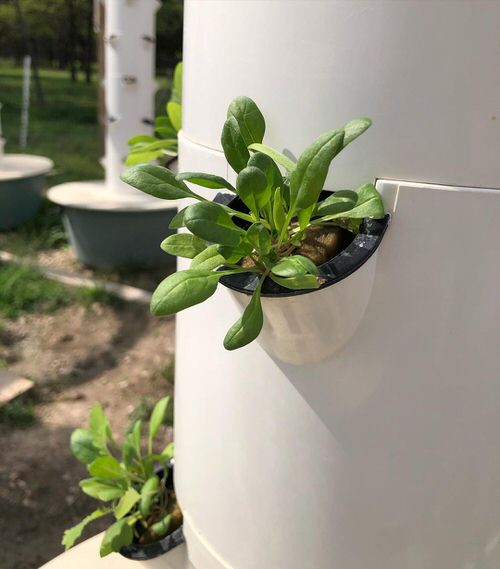
Botanical Name: Eruca vesicaria subsp. sativa
Container Size: 8-10 inches
Arugula is a fast-growing vegetable. Sow the seeds a month before the last frost in well-draining soil and place the pot where it gets ample sunlight. It is one of the Best Container Vegetables you can grow!
Here are the best Arugula companion plants
7. Bok Choy

Botanical Name: Brassica rapa subsp. chinensis
Container Size: 8-10 inches
Grow Bok Choy from seeds in a well-draining quality mix under partial shade. We have a great article for growing bok choy in pots here.
8. Turnip
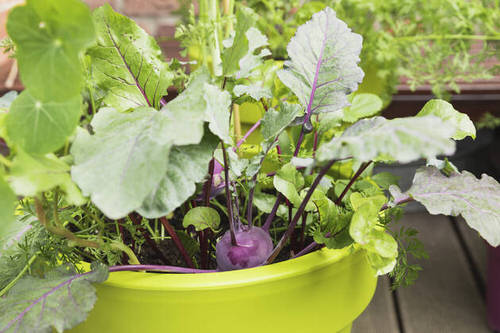
Botanical Name: Brassica rapa subsp. rapa
Container Size: 8-10 inches
Select container size according to the turnip variety you choose to grow. This root-vegetable doesn’t like to be transplanted, so directly sow seeds to the container. Check out our article for growing turnips in pots here.
9. Carrots
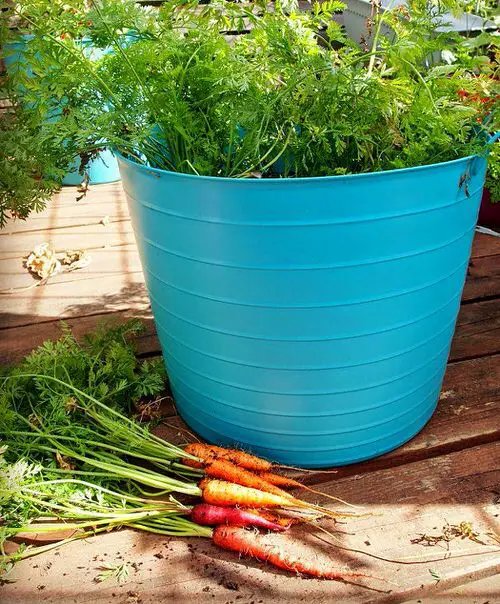
Botanical Name: Daucus carota subsp. sativus
Container Size: 10-12 inches
Sow the seeds 1/2 to 1/4 inches deep in well-draining, aerated, and light soil. Choose a sunny location for growing carrots, whereas in the warm season, keep them in partial sun. To know all the details on growing carrots in pots, click here.
Check out our article on growing Carrots in a balcony here
10. Tomatoes
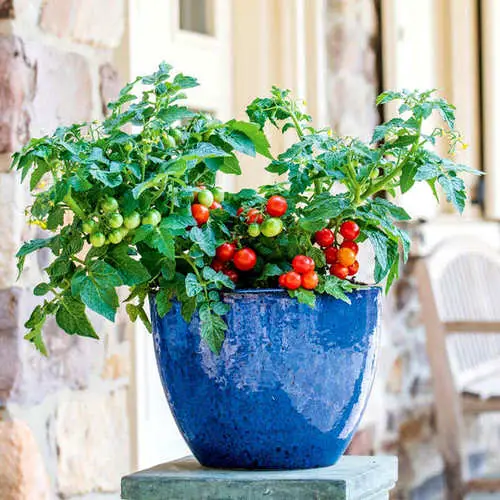
Botanical Name: Lycopersicon esculentum
Container Size: 12-15 inches
You can grow tomatoes from both seeds and tomato seedlings from the nursery. Technically, a fruit, this delicious vegetable, is quite productive in pots. Find the 15 secrets for growing tomatoes in containers here.
Here are the best companion plants for Tomatoes
11. Beetroot

Botanical Name: Beta vulgaris subsp. Vulgaris Conditiva Group
Container Size: 10-12 inches
Sow seeds directly in pots as they don’t like to be transplanted. This root vegetable can be grown in full sun to partial shade. Check more growing details here.
12. Swiss Chard
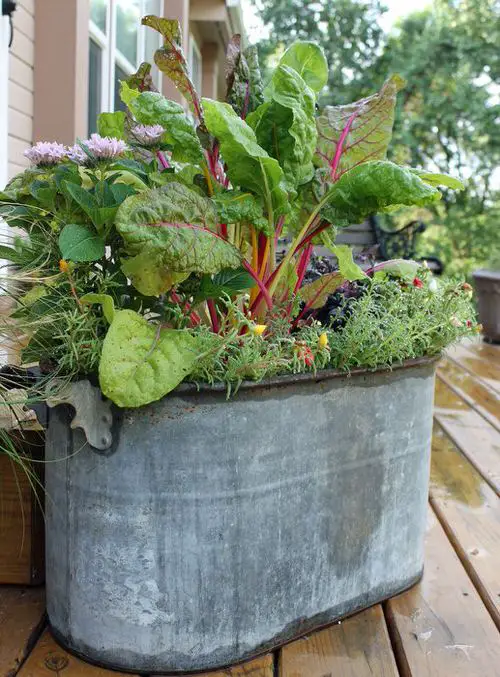
Botanical Name: Beta vulgaris subsp. vulgaris
Container Size: 10-12 inches
Start seeds indoors in organically rich soil 3-4 weeks before the last frost date. Go for a small-sized variety, and trim leaves when they reach 6 inches, to boost more leaf than root growth.
Check out our article on growing Swiss Chards in pots here
13. Radishes
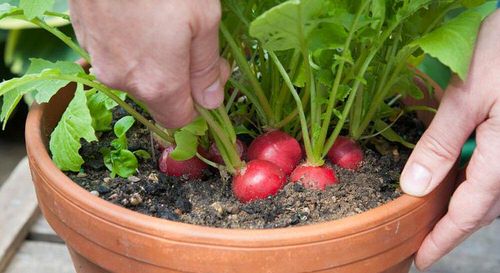
Botanical Name: Raphanus sativus
Container Size: 8-10 inches
Radishes can be grown even in small containers. Spread some seeds in the pot, and place where it receives 3-5 hours of direct sunlight. Also, water the plant regularly. Check our article for more details here.
Find out the best radishes for containers here
14. Green Onions
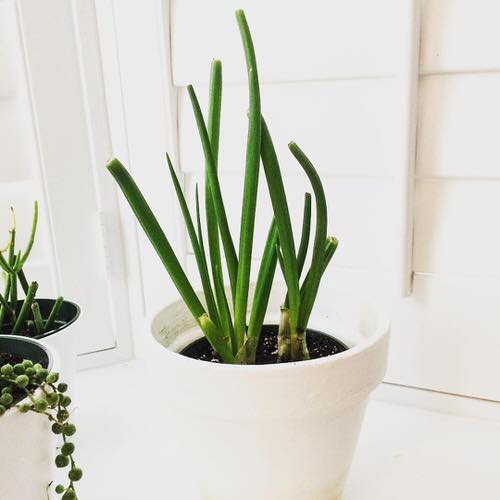
Botanical Name: Allium fistulosum
Container Size: 6-8 inches
There is no restriction on planting time as you can grow green onions from spring to fall and winters. Check details for growing green onions in pots here.
Have a look at our article on growing green onions in the water here
15. Garlic

Botanical Name: Allium sativum
Container Size: 8-10 inches
You can grow garlic anytime during the year. Use organic, well-draining soil and place the pot on a south or west-facing window. Learn more about growing garlic in pots here.
Check out our article on growing garlic greens in pots here
16. Bell Pepper
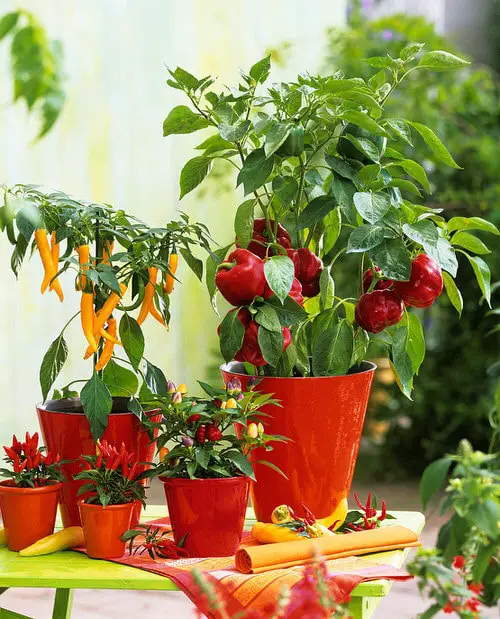
Botanical Name: Capsicum annuum
Container Size: 10-12 inches
Growing bell pepper in pots is easy, and you can propagate it from seeds or buy a plant from a nursery. Use good quality soil and plant it in a sunny location.
17. Microgreens

Container Size: 3-5 inches
Microgreens are baby plants grown in shallow pots and harvested young they are an inch or two.
Here’s everything you need to know about growing Microgreens
18. Eggplant
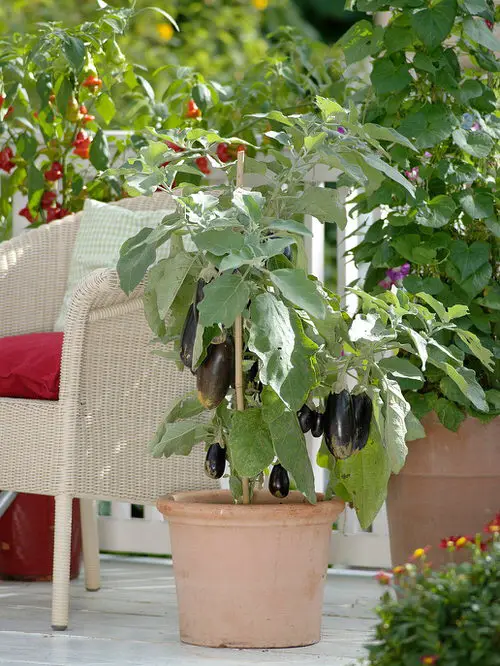
Botanical Name: Solanum melongena
Container Size: 10-12 inches
You can grow eggplants in two ways–either through seeds or from nursery-bought seedlings. Read more about eggplant growing information here.
19. Fenugreek

Botanical Name: Trigonella foenum-graecum
Container Size: 6-8 inches
Fenugreek can be in pots just like other green vegetables. Use rich potting soil and place the containers in a spot with 4-5 hours of direct sun. Check this post for more details.
20. Artichokes

Botanical Name: Cynara scolymus
Container Size: 14-16 inches
Artichokes are a tasty, nutritious vegetable grown in pots in small spaces during spring or fall. Check out our post on growing artichokes in containers here.
Find out the best artichoke varieties here
21. Okra
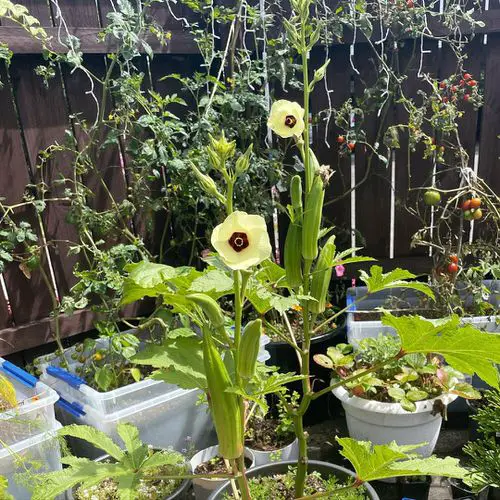
Botanical Name: Abelmoschus esculentus
Container Size: 10-12 inches
Also known as lady’s finger, this warm season tropical vegetable prefers full sunlight for at least 5-6 hours is a must. Use well-draining, loamy, and crumbly soil.
Here’s everything you need to know about growing okra in pots
22. Bitter Melon
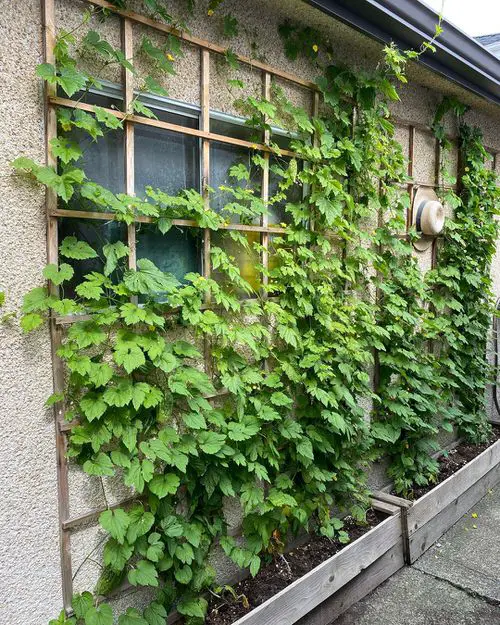
Botanical Name: Momordica charantia
Container Size: 12-16 inches
Just like the name, this popular vegetable has a bitter taste but is high in nutritional value. It is consumed unripe when green or slightly pale.
Check out our article on growing bitter melon here
23. Ivy Gourd
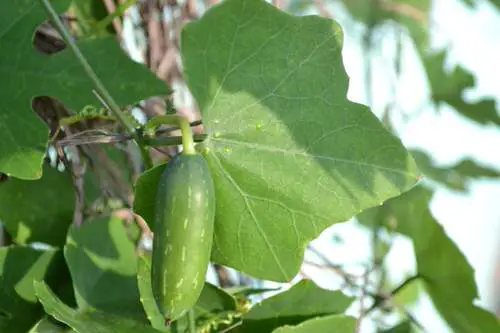
Botanical Name: Coccinia grandis
Container Size: 10 inches deep
Grow ivy gourd where it can receive full, though it can also do well in partial shade. Use well-draining, loose, and porous soil.
Here’s all the information you need about growing ivy gourd
24. Malabar Spinach
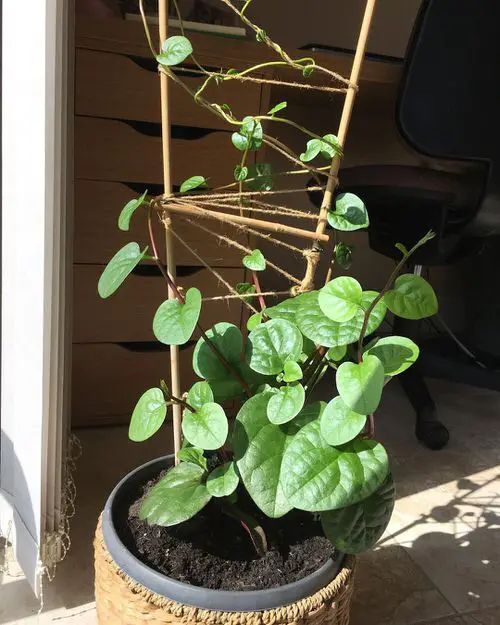
Botanical Name: Basella alba
Container Size: 10-14 inches
This fast-growing vine produces edible leaves that release a mild spinach-like smell when crushed. You can grow it from both seeds and cutting.
Check out our article on growing Malabar spinach here
25. Potatoes
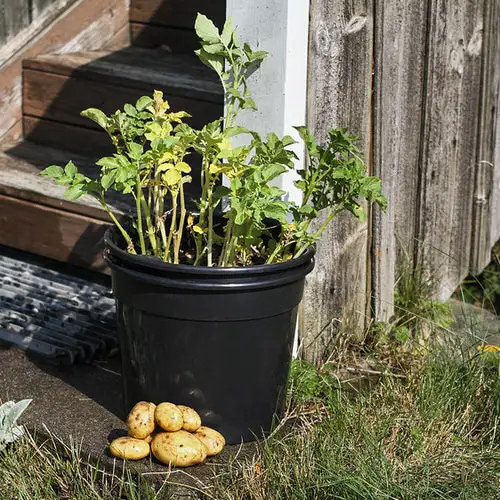
Botanical Name: Solanum tuberosum
Container Size: 12-14 inches
Growing potatoes indoors in pots is easy and fun. They need at least 4-5 hours of sunlight and light, grainy, organically-rich potting soil. These are one of the Best Container Vegetables you can grow for sure!
Check out our article on growing potatoes in pots here
26. Zucchini
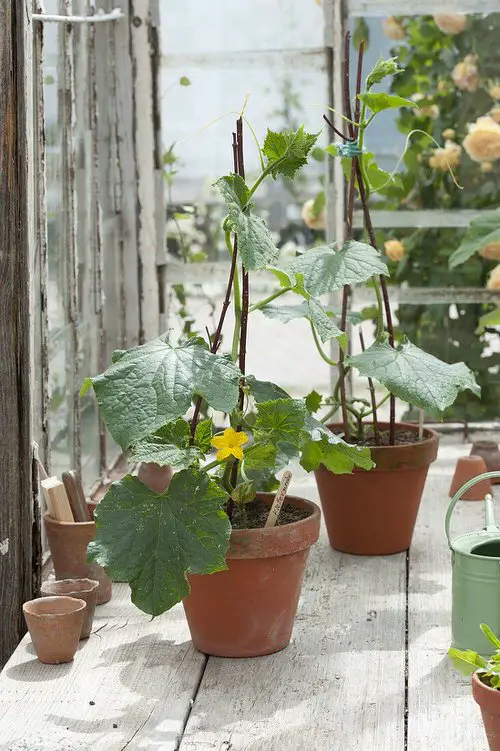
Botanical Name: Cucurbita pepo
Container Size: 10-14 inches
You can grow this nutritious veggie without having a garden. Grow compact varieties like ‘Eight Ball,’ ‘Raven,’ ‘Jackpot Hybrid,’ and ‘Geode.’
Here’s everything you need to know about growing zucchini in pots
27. Peas
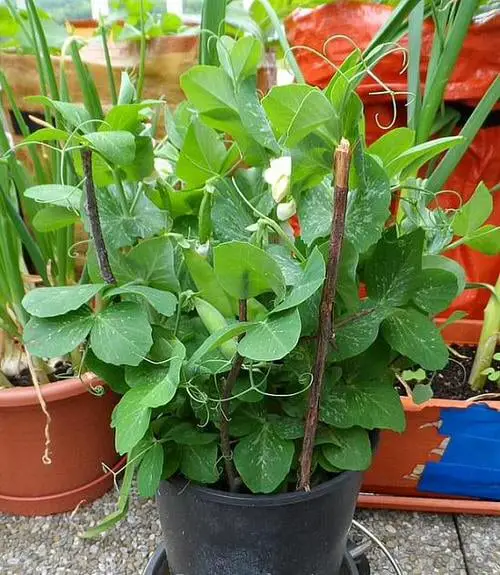
Botanical Name: Pisum sativum
Container Size: 8-12 inches
The taste of homegrown peas is just incomparable! Peas love cool weather more than hot summers and plant them in early springs. While growing indoors, plant them on the south or west-facing window.
Check out our article on growing peas in pots here
28. Beans
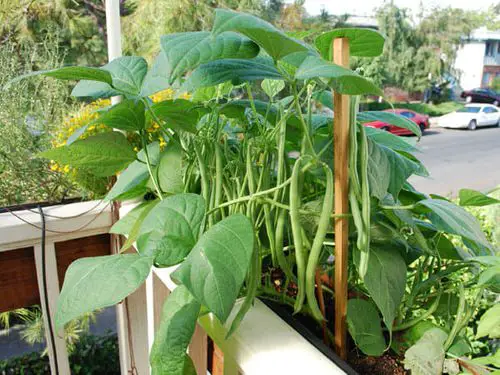
Container Size: 14-16 inches
Rich in proteins, growing beans is the best way to enjoy an organic harvest! Do make sure that you provide good support to the plant.
Check out the best types of beans you can grow here
29. Hot Peppers
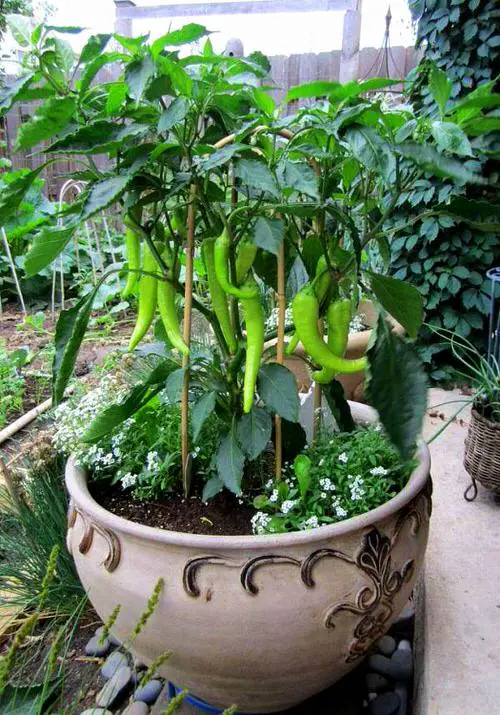
Botanical Name: Capsicum annuum
Container Size: 12-14 inches
You can buy young plants from a nearby nursery or start from seeds. Position them in an area that gets 3-5 hours of sunlight. We have a great article on growing hot peppers here.
30. Nasturtium
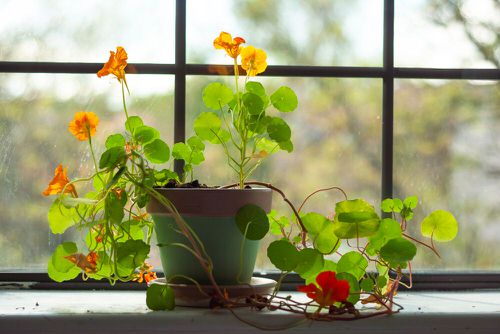
Botanical Name: Tropaeolum majus
Container Size: 10-12 inches
Fresh petals of the plant taste awesome when mixed in a green salad or many other recipes! Sow seeds four to six weeks before the last frost. If you live in a mild summer climate, you can grow them as annuals.
Here’s all you need to know about growing nasturtium
31. Cabbage

Botanical Name: Brassica oleracea var. capitata
Container Size: 10-12 inches
Savoy Ace and Savoy King are some of the best varieties you can grow. Also, Six or more hours of direct sunlight a day can do wonders for cabbage growth!
Here’s everything you need to know about growing cabbage
Bonus
32. Salad Greens

You can grow salad greens on a kitchen window box for a never-ending supply of fresh home-grown tasty salad green. Find out the best leafy veggies for salads here.
33. Herbs

Different types of herbs can also be grown in small containers, hanging baskets, and window boxes. Basil, cilantro, rosemary, oregano, parsley, mints, chamomile, sage, and thyme are the best options.



Nice